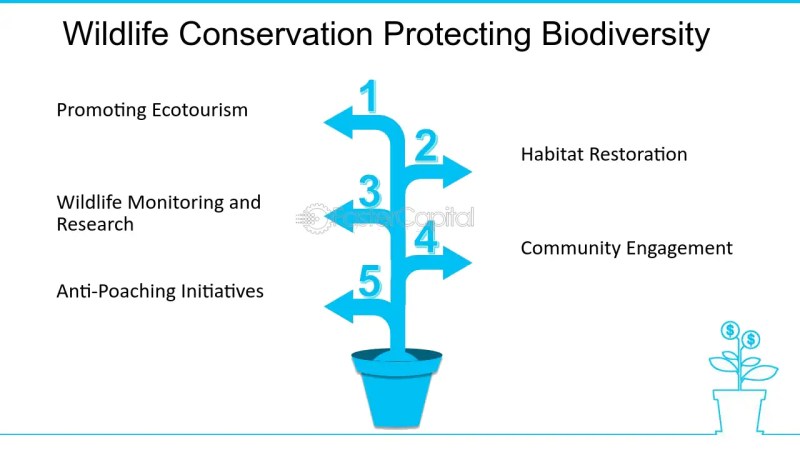Protecting Endangered Animals – Beyond simple ecological or moral duty, the conservation of endangered species is a crucial matter with substantial financial ramifications. In India, the government has launched large-scale initiatives to bring back species that were formerly extinct, making this issue especially pertinent there. In addition to restoring biodiversity, these projects also try to weigh the financial advantages and disadvantages of such conservation measures.
Table of Contents
ToggleIndia’s Ambitious Biodiversity Project: Reintroducing the Cheetah
A ground-breaking biodiversity initiative to bring back the cheetah, which was declared extinct in India in 1952, was started in 2022. Since there aren’t many cheetahs in Iran—the only other nation where they may be found—moving a handful of them from Namibia, Africa was part of the project. With a major expenditure of almost $100 million, the project’s initial phase intended to restore India’s grassland ecosystems.
Reintroducing cheetahs, according to officials, would aid in reducing the number of herbivores—like deer—who are known to overgraze and damage grasslands. Cheetahs would indirectly aid in the restoration of the environment by controlling these populations, so promoting the well-being of other species. This enormous undertaking has, however, raised discussions over whether the advantages of these conservation efforts exceed the disadvantages.
The Complexities of Conservation Efforts
The preservation of threatened species is a complicated matter with many moving parts, so figuring out the exact benefits and drawbacks is challenging. Reintroducing animals such as the cheetah is a risky and difficult process that tries to bring ecological equilibrium back.

For example, reports of an upsurge in snake fatalities started to appear shortly after the cheetahs were reintroduced. Some questioned if the possible ecological disturbances warranted the conservation effort. They maintained that India should prioritize protecting its native species, many of which are already in danger of becoming extinct, rather than trying to reintroduce species from other continents.
The Economic Perspective on Conservation
Through what they dubbed the “Noah’s Ark Problem,” economists Andrew Metrick and Martin Weitzman offered a framework for comprehending the financial effects of conservation. This idea, which draws inspiration from the biblical account of Noah, contends that choices must be made on which species to save in times of resource scarcity. The crucial query is: Given a restricted budget, how should conservation initiatives be prioritized?
Metrick and Weitzman suggested evaluating each species’ “expected utility,” which takes into account both its ecological and economic worth, as a solution to problem. Take the Indian vulture, for instance, whose population experienced a sharp drop as a result of cattle’s extensive use of the painkiller diclofenac. Although the medication was beneficial for cattle, it was fatal for vultures that consumed the corpses of the treated animals, resulting in renal failure and widespread vulture deaths.
Because they eat animal corpses and stop illnesses from spreading, vultures are important members of the environment. Due to their decrease, there were more wild dogs and rats in the area, which aided in the spread of rabies and other illnesses. Due to the fall in vulture populations, researchers calculated that the yearly economic impact of this public health concern was around £5.7 million.
The Economic Benefits of Successful Conservation
While it is clear that losing a species has a financial cost, effective conservation initiatives may also have a large positive economic impact. The reintroduction of wolves into Yellowstone National Park in the United States is a prominent example of this. Despite the project’s initial roughly $30 million cost, the wolves’ presence brought in tourists, bringing in an estimated $35 million a year in tourism earnings. A variety of animals benefited from the park’s environment being restored as a result of the wolves’ reintroduction.

This illustration highlights the possible financial gains from conservation initiatives, especially when they result in higher tourism and ecological restoration. But the Yellowstone wolf situation also emphasizes how crucial it is to introduce non-native animals into an environment with considerable thought and preparation.
The Challenges of Species Reintroduction in India
There are particular difficulties associated with cheetah reintroduction in India. Cheetahs are not indigenous to the Indian subcontinent and have been gone from the environment for many years, in contrast to wolves in Yellowstone. This begs the issues of their possible influence on other species as well as their capacity to adapt to the current environment.
Opponents contend that native animals that are already endangered would be better protected with the funds allocated to the reintroduction of cheetahs. For instance, poaching, habitat degradation, and conflict between humans and wildlife have all contributed to the dwindling tiger population in India. Ecologically and financially, funding tiger conservation might have more direct and noticeable results.
The Case for Protecting Native Species
Successful conservation initiatives in Africa have shown how important it is to preserve local species. For example, before lions were reintroduced in Liwonde National Park, Malawi, vultures had all but vanished. Because of the lions, there were more carcasses, which fed the vultures and helped to replenish their numbers.
The Indian ecology could also benefit from the cheetah reintroduction if it is effective. This result is not assured, though, since a number of factors, such as the cheetahs’ capacity to adjust to their new surroundings and the efficacy of continuous conservation efforts, will determine the project’s long-term success.
The Broader Implications of Conservation Efforts
In the end, maintaining entire ecosystems and the services they offer is more important than simply safeguarding individual creatures when it comes to the protection of endangered species. Metrick and Weitzman’s research indicates that in certain cases, the financial advantages of conservation may surpass the expenses; nevertheless, this necessitates a meticulous evaluation of the ecological and financial aspects at play.

The economic effects of conservation efforts are especially noteworthy in India, where the expense of healthcare is on the rise and a large portion of the population pays out of pocket. Long-term economic gains may result from protecting endangered species since doing so maintains ecosystem services and lowers dangers to the public’s health.
But just as with any investment, it’s critical to balance the risks and possible rewards. This may occasionally entail giving native species conservation a higher priority than the reintroduction of non-native species. In other cases, it could entail creative conservation strategies that optimize the advantages to the environment and the economy.
Conclusion
It is a difficult task to protect endangered species since it involves striking a balance between social, economic, and ecological factors. Although initiatives such as the restoration of cheetahs in India have great potential, there are concerns involved that need to be properly considered. In addition to safeguarding its rich biodiversity, India may profit economically from a robust and healthy environment by embracing a strategic approach to conservation.
- Wildlife Conservation Initiatives: A Critical Overview - September 4, 2024
- 3 Program Endangered Species Protection - September 4, 2024
- Threatened Wildlife Species in 2024 - September 4, 2024








